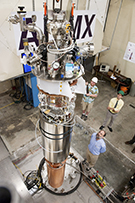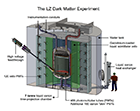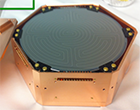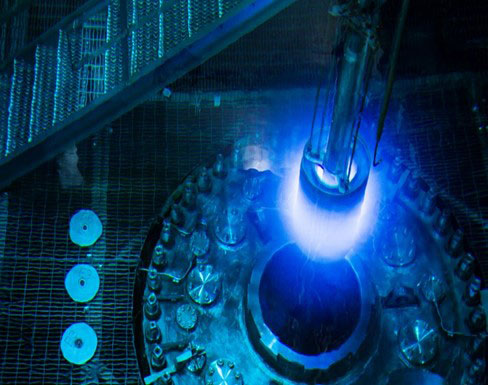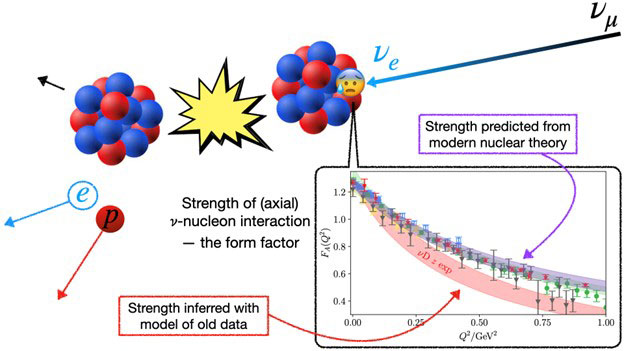Next Generation of Direct Detection Dark Matter Experiments Announced
The DOE Office of High Energy Physics and the NSF Physics Division have jointly selected a portfolio of projects for the “second generation” of direct detection dark matter experiments. We are pleased to announce that the joint DOE/NSF second-generation program will include the LZ and SuperCDMS-SNOLAB experiments with their collective sensitivity to both low and high mass WIMPS, and ADMX-Gen2 to search for axions. It will also include a program of R&D to test and develop technologies for future experiments, consistent with the recent P5 recommendations. The agencies will work with the proponents to develop project plans that can achieve their compelling science goals as expeditiously as possible.
One of the leading cold dark matter candidates is the axion. The axion originally arose as part of an elegant solution to the "strong CP problem" in the Standard Model of particle physics. It was then appreciated that a light axion is an ideal cold dark matter candidate. The goal of the Axion Dark-Matter eXperiment (ADMX) Gen 2 project is to discover axions that would constitute the dark matter in our Milky Way halo. ADMX consists of a large microwave cavity resonator located inside a high-field solenoid magnet. Halo dark-matter axions which enter the cavity have a small but finite probability to convert into microwave photons. This exceedingly weak microwave signal is then detected by a receiver which is capable of near quantum-limited noise performance. This ADMX configuration is currently in operation and taking data over plausible axion masses and couplings. The Gen 2 configuration of ADMX adds a dilution refrigerator to reduce the temperature of the cavity and receiver front end. The lower temperature provided by the dilution refrigerator will result in an experiment, over its three-year operation, sensitive to even the more weakly-coupled axion over a large fraction of its plausible mass range. Starkly, as noted by many in the HEP and cosmology communities, ADMX Gen 2 has serious discovery potential.
The LUX-Zeplin (LZ) experiment utilizes 7 tonnes of active liquid xenon to search for xenon nuclei that recoil in response to collisions caused by an impinging flux of dark matter particles known as WIMPs (Weakly Interacting Massive Particles). The experiment will located nearly 1 mile underground in the Sanford Underground Research Facility (SURF) in Lead, South Dakota. The active liquid xenon is configured in a cylinder 1.5 meters in diameter and height, with an applied electric field to form a TPC (Time Projection Chamber). A recoiling xenon nucleus causes a prompt flash of scintillation light, followed by delayed flash of electroluminescence. The light signals are detected by 488 photomultiplier tubes, which are deployed above and below the liquid xenon. The central liquid xenon volume is surrounded by a thin, instrumented region of liquid xenon, an outer detector of gadolinium-loaded liquid scintillator, and a layer of ultrapure water, to identify and reduce false signals. We project that a 3-year run of the LZ experiment will achieve a sensitivity close to fundamental limits from the cosmic ray neutrino background. The LZ collaboration consists of 128 scientists and engineers from 29 institutions in the U.S., U.K, Portugal, and Russia.
The SuperCDMS (Cryogenic Dark Matter Search) collaboration has pioneered the use of low-temperature solid-state detectors to search for the rare scattering of dark matter particles with atomic nuclei. This technology provides excellent background rejection, detailed information on each interaction and very low energy thresholds. This allows unparalleled sensitivity especially to dark matter particles with small masses. The next-generation (G2) SuperCDMS experiment will operate in the deepest underground laboratory in North America, SNOLAB, to provide shielding from high energy cosmic ray particles. It will include a cryogenics system designed to maintain the detectors at temperatures within a fraction of a degree above absolute zero, and special clean shielding materials to exclude radioactive backgrounds from the environment. The detectors are modular, and arranged in towers that provide electrical connections and cooling. Some of the detectors will be operated in a way that provides ultra low energy thresholds, but reduced background rejection. This will extend the reach of the experiment to dark matter particle masses below that of the proton. The experiment will be designed to allow additional detector target mass up to 400 kg, with the possibility of incorporating different types of solid-state detectors.

